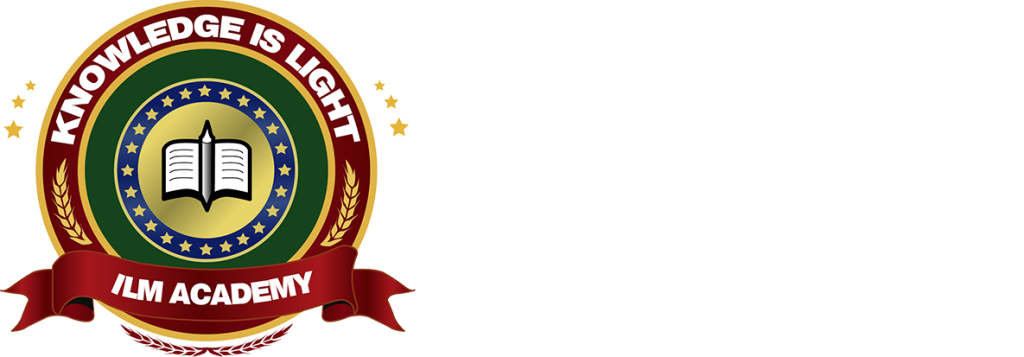At Ilm Academy, all students are required to take the Standardized Assessment Test as prescribed by the state standards. The content of the tests is aligned with national and state standards and allows the school to measure its level of competence and achievement in relation with other public/private schools. Standardized Assessment Test also highlight a student’s strength or weakness in any area so as to aid effective teaching.
Elementary/Junior High
Teaching / Instructional Philosophy
The teaching philosophy is to create a lively, meaningful, experiential curriculum about things that matter to students. An effort is made to show and assimilate real world situations in the form of role plays, demonstrations, projects, critical thinking activities like Socratic seminars and debates. Research skills are encouraged to develop by giving an opportunity to analyze maps , research assignments, primary source documents, analyzing a political cartoon , delving into people’s history, and bring current affairs and social dynamics alive. An Islamic perspective and value based philosophy is blended into the lessons to promote civic engagement in a strong Islamic identity and contribute to the development of a diverse global perspective.
Instructional Strategies
- Student centered classroom that is rigorous yet accommodating to all types of learners.
- Quizzes and higher order thinking questions challenge and accelerate student learning.
- Project based lesson assigned as role play, discussions in the form of Socratic seminar, debate, research assignments, integrating past into present and present into past and future, virtual field trips, and gallery walks. Art , poster making , and model construction are used to bring the past alive.
- Field trips like visiting a historical society, or a museum is generally provided in a given year. In Covid19 scenario of virtual learning, students took virtual field trips via Nearpod lessons and Google Earth
- To promote civic engagement and leadership skills, students are encouraged to participate going to the CA State Capitol. Partnership is developed with CAIR – a nonprofit civil rights and advocacy organization to celebrate the Muslim Day at the CA State Capitol. Regular school civic engagement activities are organized through the year to encourage fundraising for fire victims, homeless shelters, and blanket and shoe drives.
The workbooks serve as a great resource for practicing the concepts taught in the coursebooks. Ilm Academy’s Quran curriculum also encourages students to memorize the 30th Juzu’ along with important surahs and ayats for daily duas. The overall purpose and objectives of the deeniyat curriculum is to help students understand their identity as Muslims, practice their religion following the sunnah, and be good citizens who contribute to the development of their community and country.
Arabic as a Language
The Arabic Language course at Ilm Academy is designed to prepare students in basic skills of reading, writing, listening and speaking in Modern Standard Arabic (MSA). The curriculum is based on the Madinah Arabic Reader coursebooks 1-4 for elementary level, and the Easy Method of Learning Arabic Language Parts 1-3 for middle and high school classes. For elementary classes, Arabic language lessons focus on foundational skills of writing letters, numbers, simple words and sentences along with drills in listening and proper pronunciations. The goal at this level is to introduce the basics of MSA to students, and through these series of lessons and exercises, students are expected to develop basic reading and writing skills at an early age.
For the middle and high school levels, Arabic lessons expand to include grammar and more complex reading comprehension passages. In addition, drills in translation of sentences and passages from Arabic to English and from English to Arabic become the focal points of each lesson. The goal of these lessons and exercises is to prepare students have simple communications in various situations. Upon completing these lessons, students are expected to have solidified knowledge of basic vocabulary, and be able to write and comprehend simple sentences.
Full time hifz is a great way to complete the memorization of Qur’an without having to homeschool. Students spend the first half of their day in their hifz class, and after lunch, they join the rest of their classmates for the remainder of the classes. This provides a full-classroom environment that is sometimes necessary for students to learn. After school, hifz students stay and take private lessons with their teachers to catch up on what they have missed during the first half of their day. Hifz students are fully accommodated, as we understand that memorizing the Qur’an is no simple task. For this reason, any projects or homework assignments are waved off for hifz students if need be.
Language arts from grades 5th to 8th is geared towards polishing students’ comprehension, analysis, and critical writing skills that ensure that students learn to communicate in a highly effective, potent, and positive manner. The work of Ilm Academy writers has consistently proven to be at 10th and 11th grades when they graduate from the school, as evidence by high school entrance exams taken for private or public high schools. The language arts program is additionally enhanced with original school publications including a school magazine Ilma Voices, and anthologies of poetry, essays, and short stories. The school publications showcase students work, provide motivation, and brings to the fore the talent of writers groomed with a purpose. All of Ilm Academy’s publications are published by the school’s publishing division, Sapienza Educational Publishing, and available for sale on Amazon and through the school website.
A consistent theme in the middle school Math course is discussions, different interpretations, different approaches to understanding a concept which encourages deeper thinking and significant retention of concepts for a positive impact on their overall learning. Projects incorporated in these courses provide students with opportunities to explore the applicability of these concepts as well as encourages creativity and reinforces critical thinking.
At the middle school level, Ilm Academy has adopted a curriculum that follows Next Generation Science Ideas, NGSS. In these science courses, concepts are introduced in a sequence that brings relevancy and facilitates an in-depth experience with topics. Along with content, knowledge skills such as collaboration, communication, and presentation are also integrated in these classes. A very unique and meaningful component of the science curriculum across all grades is integrating the teachings from the Quran into sciences. Quranic teachings within science curriculum aims to make students aware of their responsibility towards themselves, their environment and the society at large and helps them recognize their role as global citizens.
ILM Academy’s social studies program recognizes the critical importance of identity and community in creating a strong self-esteem and confidence. Students get opportunity to participate in debates, role plays, research based projects, critical thinking and analyzing current affairs, and field trips to help them understand their world and make informed decisions. Students are provided a strong grounding in map and research skills, are made aware of the importance of geography and history, and are geared toward an appreciation of diversity, tolerance, and good citizenship. Ilm Academy participate in civic engagements based on values that develop empathy, equality, and fairness for fellow citizens. Human interactions in family and community are studies to provide opportunities to practice higher order thinking skills.
The mission of Ilm Academy’s Physical Education Program is to develop physically educated students who have the knowledge, skills, and confidence to enjoy a lifetime of healthful physical activity. Physical activities are critical to the development and maintenance of good physical and mental health. It is the goal of the school’s PE Program is to provide students with developmentally appropriate learning opportunities. All students will be provided opportunities to develop health-related fitness, physical competence, cognitive skills, and positive attitudes about physical activity that promote a healthy and physically active lifestyle.
Program Purpose
A physically educated etudent will:
- Demonstrates competency in motor skills and movement patterns to perform various of physical activities.
- Participates regularly in physical activity.
- Demonstrates understanding of movement concepts, principles, strategies, and tactics as they apply to the learning and performance of physical activities.
- Achieves and maintains a health-enhancing level of physical fitness.
- Exhibits responsible personal and social behavior that respects self and others in physical activity settings.
- Values physical activity for health enjoyment challenge, self- expression and social interaction with peers.
All students are required to be present for the Standardized Assessment Test held in April. If a student misses the entire or some parts of the tests, the test will be considered incomplete and will not be sent for grading.
Since its inception, Ilm Academy’s scores in Standardized Assessment Test have remained commendably high.

